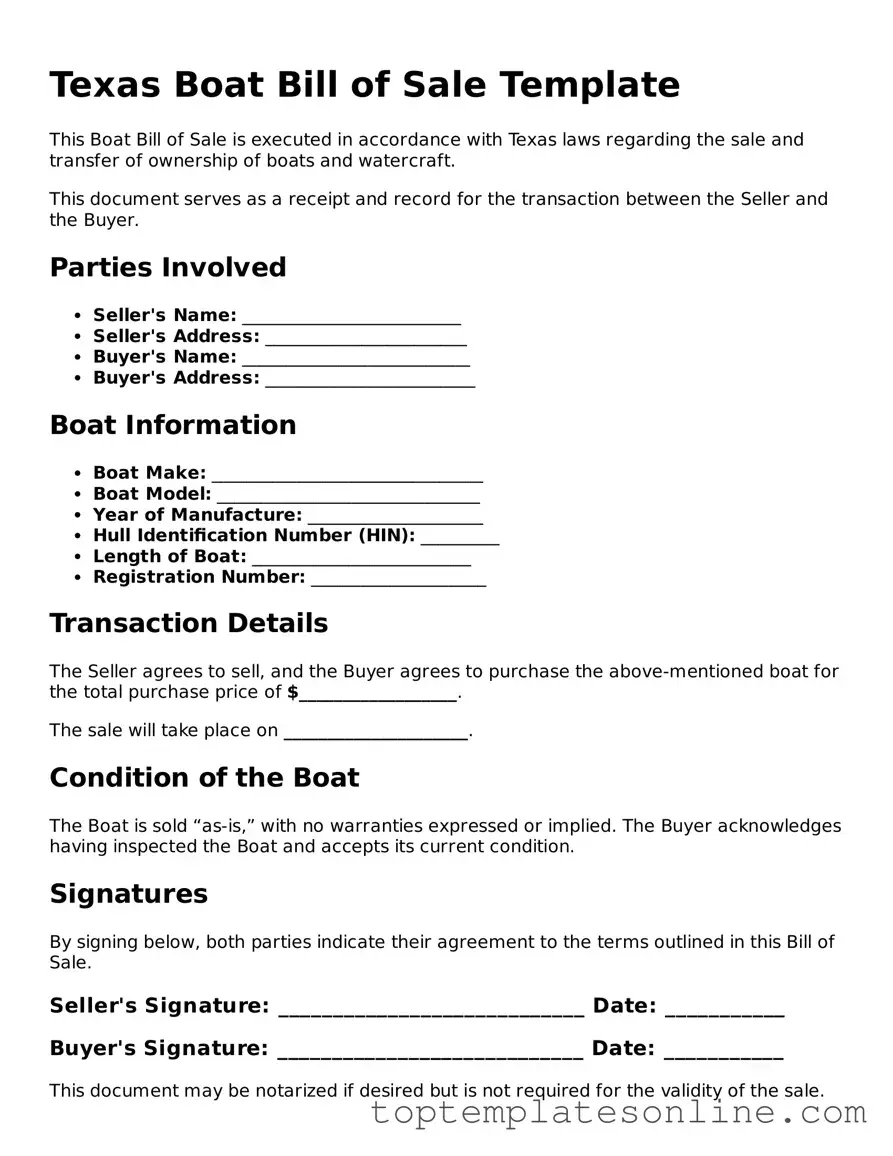The Texas Boat Bill of Sale form serves as a crucial document in the transfer of ownership for watercraft within the state. This form not only provides essential information about the vessel, such as its make, model, year, and hull identification number, but it also details the identities of both the seller and the buyer, ensuring a clear record of the transaction. Additionally, the document typically includes the sale price, date of sale, and any warranties or representations made by the seller regarding the condition of the boat. By requiring both parties to sign the form, it establishes a legally binding agreement that protects the interests of both the seller and the buyer. Furthermore, the Texas Boat Bill of Sale may also serve as a valuable tool for registering the boat with the Texas Parks and Wildlife Department, thereby facilitating compliance with state regulations. Understanding the importance and components of this form is vital for anyone engaged in the buying or selling of a boat in Texas, as it helps to ensure a smooth and lawful transaction.
